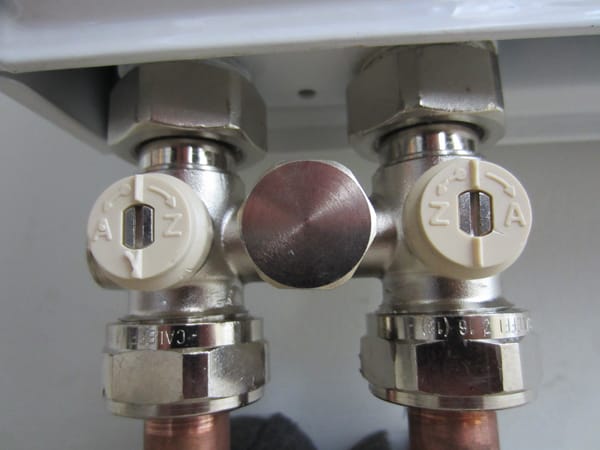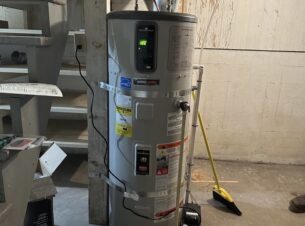From the 1950s through the 1970s — before PEX — radiant heating often consisted of slab-on-grade foundations with copper tubing. Over the years many of these in-floor systems developed tubing leaks. Doke Kim of Doke’s Plumbing, Inc. of San Rafael, Calif., says a reliable, cost-effective solution was not always available.
“Around here there are thousands of this type of home made by the same builder. Installing a radiant slab on top of an existing one is not feasible because the homes already have low ceilings by today’s standards. Sacrificing more head-room is hard for owners to swallow. Another problem is the houses were designed with space efficiency in mind and have A-framed roofs with no attic, leaving no space above to route piping.”
Prior fix attempts by others was to install copper-finned baseboard along the outside walls in the rooms and plumb in series by running one large loop around the home – either in-ground outside the wall perimeter or along the underside of the roof. Says Cal-Steam’s hydronics designer Chris Parks, “These homes have one thermostat. The result is predictable – the rooms nearest the boiler become overheated and the last rooms get under-heated. And the owner, who is accustomed to comfort, gets real unhappy to put it politely.”
A solution Chris developed utilizes panel style radiators fitted with thermostatic control valves and plumbed using uniquely designed connection valves. “This solution not only provides radiant heat comfort similar to slab radiant, the thermostatic control valves allow the temperature in each room to be controlled individually — a huge bonus.”
The radiators are plumbed in series utilizing Caleffi panel connection valves which allow some hot water to flow to the radiator and by-pass the remaining to the next radiator downstream. The Caleffi thermostatic control valves require no electrical power to operate.
“Typically on retrofits when there is sufficient space I use a ‘home run’ system because a two-pipe design delivers the same temperature to each radiator making sizing a bit simpler. But these homes don’t have space to run supply and return pex lines. By using Caleffi one-pipe connection valves on a relatively small number of radiators my task becomes pretty easy. I just size each radiator at a slightly lower water temperature than the radiator prior,” says Parks.
“With this solution under my belt, I gladly take on new jobs. I know the customer will have restored radiant comfort and be happy he can control each room’s temperature without significant cost,” says Kim.




Join the conversation: